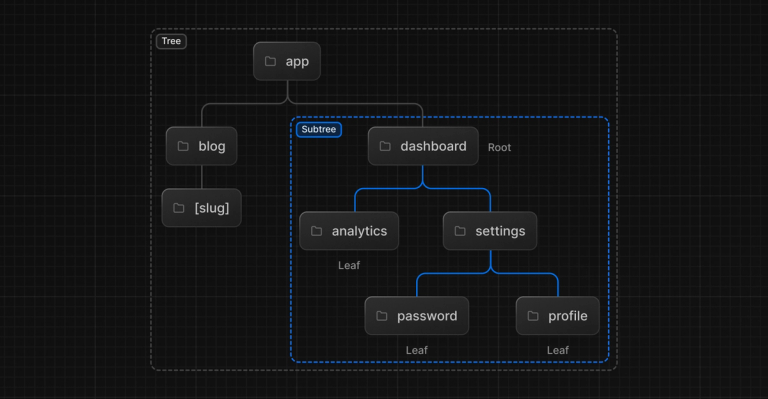Vercel vs Netlify: How to Pick the Right Platform
In today's web development landscape, choosing the right deployment platform is crucial for performance, scalability, and ease of use. Vercel and Netlify are among the top choices for developers looking to build and manage web applications effectively. This article breaks down their features, performance, ease of use, and pricing to help you decide.

Vercel and Netlify are two of the most popular platforms for static site hosting and serverless deployment, both supporting the Jamstack architecture. They offer blazing-fast performance, automatic scaling, and serverless functions, making them top choices for modern web development.
But when it comes to Vercel vs Netlify, which one should you choose for your project? This guide breaks down the key differences, so you can make the best decision based on your needs.
When to Choose Vercel vs Netlify
- Go with Vercel if your project requires fast global content delivery and SSR. Vercel offers deep integration with Next.js, making it the best option for dynamic content and SEO.
- Opt for Netlify if you need a feature-rich ecosystem with built-in tools like form handling, identity management, and A/B testing. Netlify is a solid choice for static sites that benefit from these built-in features.
To help you decide between Netlify vs Vercel, check out this simple decision tree:
Vercel vs Netlify: Decision Tree
Do you need Server-Side Rendering?
- Yes → Choose Vercel
- No → Move to the next question
Are you using Next.js or prioritizing edge performance?
- Yes → Choose Vercel
- No → Move to the next question
Do you need built-in form handling, identity management, or A/B testing?
- Yes → Choose Netlify
- No → Move to the next question
Is pricing flexibility and integrated tools important to you?
- Yes → Choose Netlify
- No → Move to the next question
Do you prefer using Docker for builds?
- Yes → Choose Netlify
- No → Choose Vercel
Netlify vs Vercel: Detailed Feature Comparison
To make an informed decision between Netlify vs Vercel, let's compare their features:
1. Server-Side Rendering Support
- Vercel is the clear winner if your project requires SSR, especially for Next.js applications.
- Netlify focuses on static site generation and does not support native SSR.
✅ Winner: Vercel
2. Edge Network Performance
- Vercel has an advanced edge network for lightning-fast global content delivery.
- Netlify also provides a CDN but is more optimized for static content.
🤝 Draw
3. Serverless Function Capabilities
- Vercel supports multiple programming languages and integrates well with edge computing.
- Netlify mainly supports JavaScript and Go, limiting flexibility.
🤝 Draw
4. Built-in Features
- Netlify offers native form handling, identity management, and A/B testing.
- Vercel lacks these built-in tools, requiring third-party solutions.
✅ Winner: Netlify
5. Scalability and Auto Scaling
- Vercel provides automatic scaling for large-scale applications.
- Netlify offers solid performance but is better suited for static sites.
✅ Winner: Vercel
6. Pricing & Cost Efficiency
- Both offer free tiers. Vercel pricing can ramp up with bandwidth and seats. Netlify has a more generous free tier but locks advanced features behind Pro/Enterprise.
🤝 Draw
7. Git and CI/CD Integration
- Vercel and Netlify both integrate seamlessly with Git for continuous deployment.
- Both platforms support branch deploys and preview URLs.
🤝 Draw
8. Best Choice for Next.js and Dynamic Sites
- If your project heavily relies on Next.js, Vercel is the best choice.
- Netlify supports many frameworks, but lacks Next.js optimizations.
✅ Winner: Vercel
9. Best Choice for Static Sites
- If your project is a static site with minimal dynamic elements, Netlify is a strong option.
- Built-in features like forms and identity management make it ideal for content-driven websites.
✅ Winner: Netlify
Final Recommendation: Netlify vs Vercel
| Feature | Vercel | Netlify |
|---|---|---|
| Server-Side Rendering | ✅ Yes | ✅ Partial |
| Edge Performance | ✅ Excellent | ✅ Excellent |
| Built-in Features | ❌ No | ✅ Yes |
| Best for Static Sites | ✅ Decent | ✅ Excellent |
| Best for Next.js | ✅ Yes | ❌ No |
| Serverless Functions | ✅ Yes | ✅ Limited |
| Pricing & Cost Efficiency | ✅ Good | ✅ Good |
Final Verdict:
- Choose Vercel if you’re building a Next.js-powered dynamic website that needs SSR, ISR, and global edge performance.
- Choose Netlify if you want a feature-rich, developer-friendly platform for static or content-heavy sites...
In short:
- Vercel vs Netlify for Next.js → Vercel wins
- Netlify vs Vercel for Static Sites → Netlify wins
Which One Should You Use?
Your choice between Netlify vs Vercel should depend on your project's needs. If your focus is dynamic content, scalability, and edge network speed, Vercel is the best fit. If you need a user-friendly platform with built-in tools for static sites, Netlify is your answer.
If you're still unsure about Netlify vs Vercel, we can help you make the right choice! 🚀
📩 Need expert advice? Contact us today for a detailed consultation!




